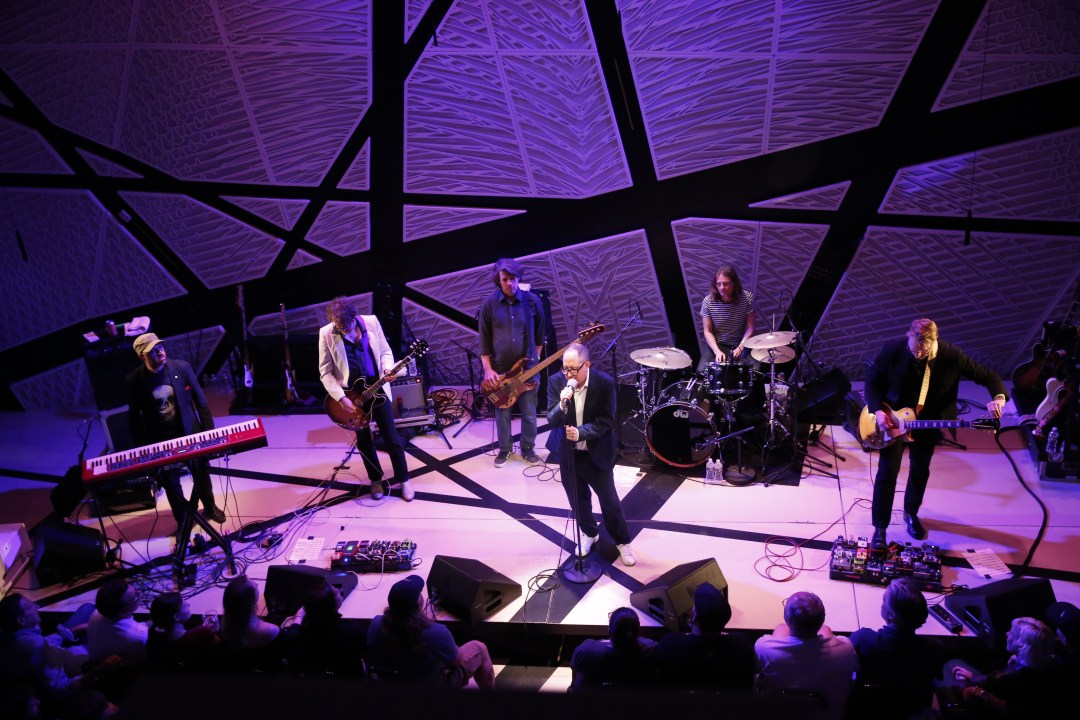Live music is thriving right now. According to the US trade magazine Billboard, Taylor Swift’s Eras tour has so far grossed an estimated $838m, and that’s just from 66 shows in the Americas. It’s already the second highest-grossing tour in pop history, and she hasn’t had to cross an ocean yet.
At the top end, live music is indeed awash in cash. But at the grassroots end, it really isn’t: December began with one of the UK’s best loved small venues, Moles, in Bath, announcing its bankruptcy – one more historic room set to shut down. Bands complain about venues taking a third of their merchandise revenues, a recent practice that eats into one of the few areas where musicians really can make some money.
International touring has become harder and harder. For UK bands, getting into Europe after Brexit has become an administrative nightmare. For US bands, coming to Britain to be paid in sterling is barely worth it – the exchange rate reduces their fee to untenable levels. It’s not as if there’s one single villain here. Everyone in the live music business – venue owners, booking agents, promoters, musicians – is finding it harder than ever to make sense of the touring business, and harder still to make money from it. Which is why every sensible artist these days is trying to find ways to minimise outgoings and monetise new things.
As November tipped over into December, I travelled to New York to see the Hold Steady. I do this every year, because they’re my favourite band, and because I’m friends with them (I wrote a book with and for them last year). They never were and never will be a big band. They’re at the level of a beloved cult, but unusually for a band 20 years into their career, they’re continuing to evolve and make worthwhile new music. Crucially they have also figured out how to make their status work for them financially: they do multi-night runs in a small number of cities, with other activities fans can pay to participate in.
It helps, too, if an artist can inspire the same level of loyalty as the Hold Steady do, and if they create rituals the way the band and their fans have done. Looking around the venue, I saw many of the same faces I do every year, both in Brooklyn and during their March visits to London. Key to all this is that the Hold Steady are a startlingly good rock’n’roll band, fronted by the best lyricist of his generation.
Still, these shows wouldn’t be half the pleasure they are without the people who attend them: you could spend the entire evening people-watching, paying no attention to the stage. There was the pair of middle-aged men just in front of me one night, mouthing all the lyrics to each other with accompanying hand gestures, as if in conversation. There was the solicitor from Leeds moving through the crowd dispensing drinks to anyone he felt needed one, barely watching the actual show. There was the young woman in the front row, dispensing bags of confetti for throwing at appropriate moments in the set.
It’s not a model everyone can replicate. You need enough songs to play four different sets. You need fans old enough to have the time and money to travel. And you need to accept that this is your limit: there is no path from here to arenas. This is it: you’re in your 50s and from now on it’s about residencies in clubs. That might be too hard for some musicians to come to terms with, but the Hold Steady have made it work for them, and turned a lesson in music industry economics into an annual source of joy.
Michael Hann is the author of The Gospel of the Hold Steady: How a Resurrection Really Feels (Akashic Books)







Comments